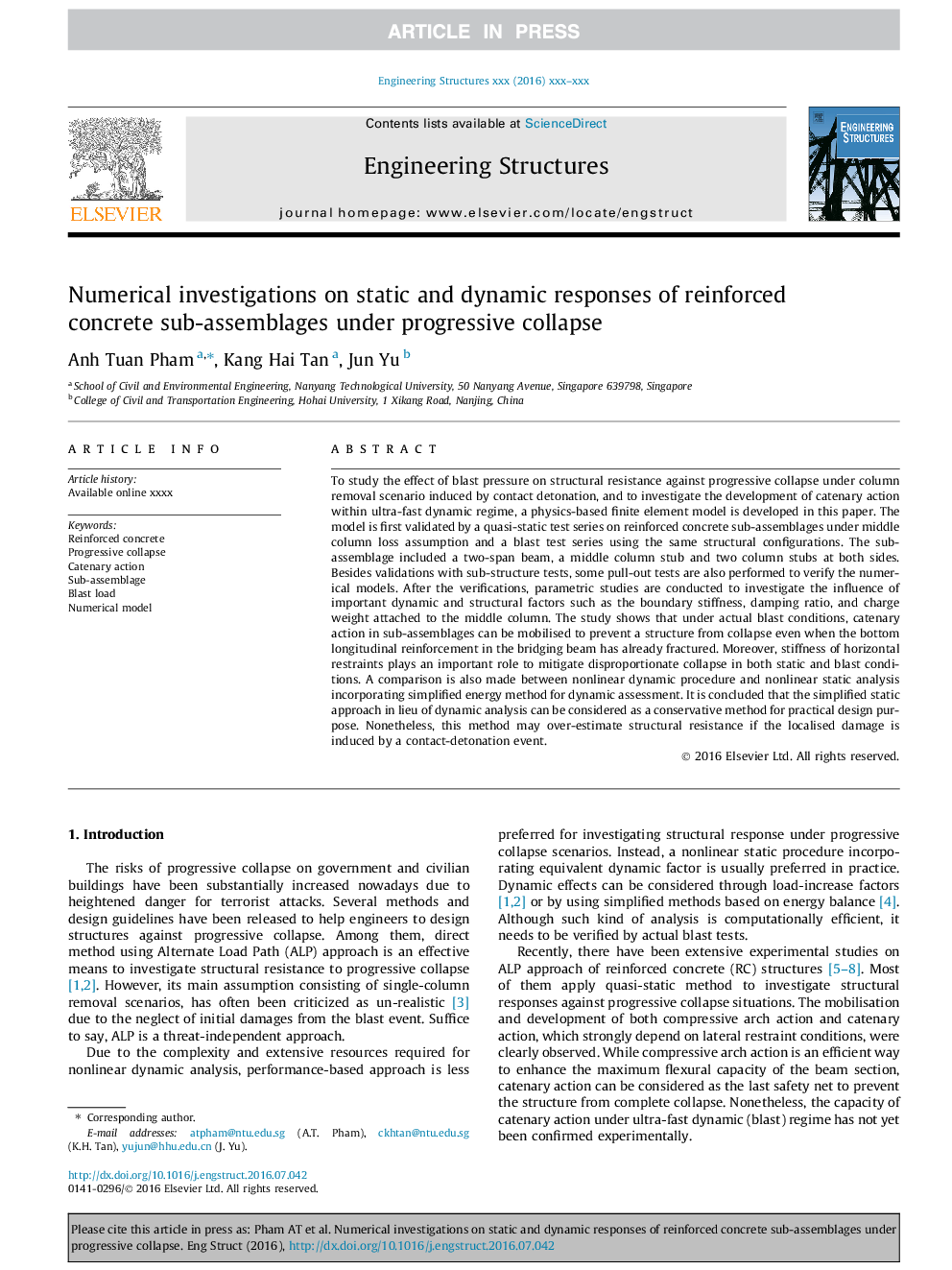| Article ID | Journal | Published Year | Pages | File Type |
|---|---|---|---|---|
| 4920099 | Engineering Structures | 2017 | 19 Pages |
Abstract
To study the effect of blast pressure on structural resistance against progressive collapse under column removal scenario induced by contact detonation, and to investigate the development of catenary action within ultra-fast dynamic regime, a physics-based finite element model is developed in this paper. The model is first validated by a quasi-static test series on reinforced concrete sub-assemblages under middle column loss assumption and a blast test series using the same structural configurations. The sub-assemblage included a two-span beam, a middle column stub and two column stubs at both sides. Besides validations with sub-structure tests, some pull-out tests are also performed to verify the numerical models. After the verifications, parametric studies are conducted to investigate the influence of important dynamic and structural factors such as the boundary stiffness, damping ratio, and charge weight attached to the middle column. The study shows that under actual blast conditions, catenary action in sub-assemblages can be mobilised to prevent a structure from collapse even when the bottom longitudinal reinforcement in the bridging beam has already fractured. Moreover, stiffness of horizontal restraints plays an important role to mitigate disproportionate collapse in both static and blast conditions. A comparison is also made between nonlinear dynamic procedure and nonlinear static analysis incorporating simplified energy method for dynamic assessment. It is concluded that the simplified static approach in lieu of dynamic analysis can be considered as a conservative method for practical design purpose. Nonetheless, this method may over-estimate structural resistance if the localised damage is induced by a contact-detonation event.
Related Topics
Physical Sciences and Engineering
Earth and Planetary Sciences
Geotechnical Engineering and Engineering Geology
Authors
Anh Tuan Pham, Kang Hai Tan, Jun Yu,
